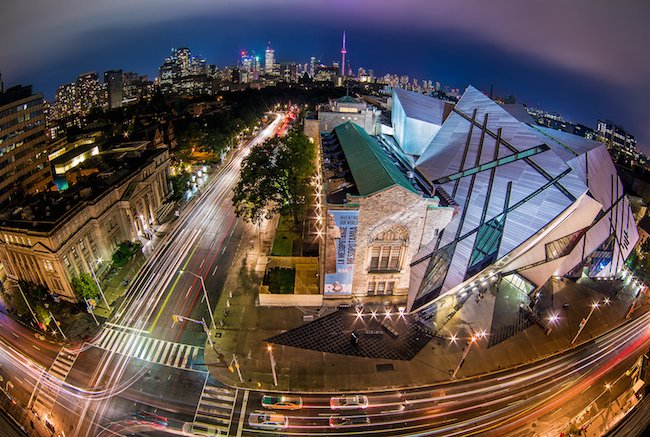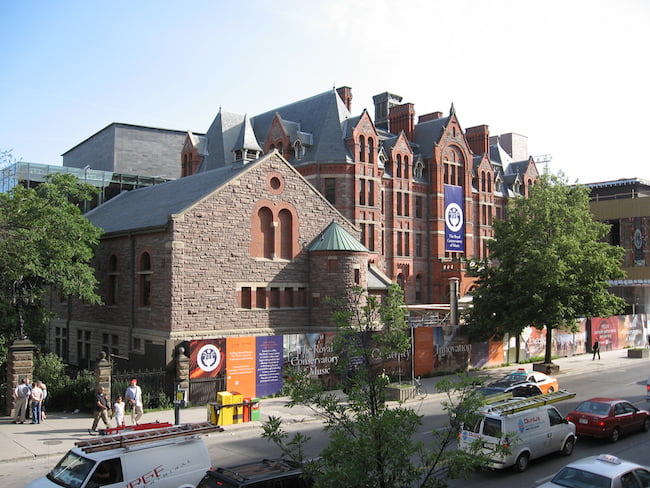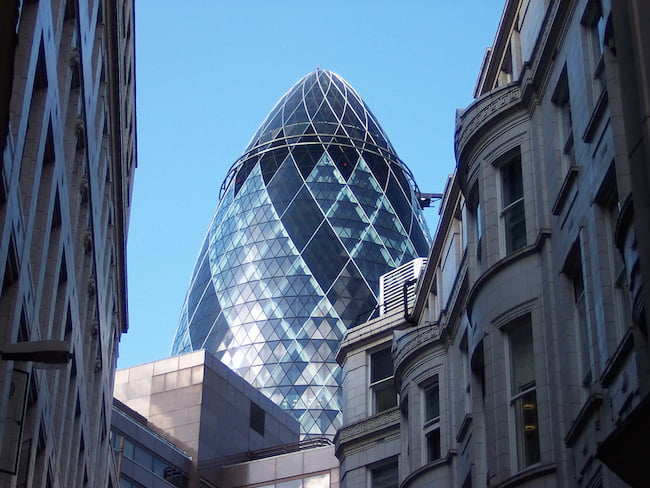Old vs. new, modern vs. classic, Lady Gaga vs. Billie Holiday. Juxtaposition is everywhere, whether it’s in music, film, food, or architecture. When you visit a city for the first time it’s common to see a shiny modern building next to a century-old church, or a decades-old monument next to a brand new landmark.
Take probably the most famous example of juxtaposed architecture, The Louvre in Paris. The most famous museum in the world dates back to the 17th century, and the baroque architecture of the original building juxtaposes sharply against the modern aesthetic of I.M. Pei’s glass pyramids. Attendance at the museum has doubled since the pyramid’s completion in 2002, which got us wondering about other examples of juxtaposition in architecture, and its impact on those buildings. Here are our top picks – two are in Toronto:
The ROM, Toronto:
With over 1 million visitors every year, the ROM is one of the busiest museums in North America. The original building opened in 1914, and was built in the Italianate Neo-Romanesque style. The eastern wing was added in 1933, and featured the art deco rotunda and a new entrance. In 2007 Daniel Libeskind debuted his new Bloor St. ROM facade The Crystal, a deconstructivist crystalline form. Now the original heritage buildings almost counteract the in-your-face design of the crystal, juxtaposing the history of the museum against the modern world while keeping its heritage intact.
Royal Conservatory, Toronto:
Though it was originally housed on College St. in Toronto, the Royal Conservatory moved into its current Bloor St. digs in 1963, taking over McMaster University’s original home, McMaster Hall. In 2002 the Royal Conservatory announced plans to restore McMaster Hall and build a new performing arts centre, and the TELUS Centre for Performance and Learning was completed in 2005. The TELUS centre’s glass cube juxtaposes sharply against the heritage building beside it, but somehow it marries old with new, much like the musicians the buildings house.
The Basque Health Department Headquarters, Bilbao:
While we used two common examples in Toronto, we wanted to stay away from the obvious global choices (Frank Gehry’s Dancing House in Prague, the Reichstag in Berlin) and include some different examples. We came across this building on ArchDaily and loved how the modern architecture of the angular glass exterior is juxtaposed against the interior. Due to zoning rules, the architects were forced to build an interior building and exterior skin, so at night you can see that the glass exterior almosts acts a cocoon. It’s a great example of juxtaposition in architecture, and a beautiful addition to Bilbao’s streetscape.
The Gherkin, London:
London is one of the most popular tourist cities in the world, and has no shortage of historic buildings. It’s not a city of skyscrapers, and the Gherkin is the second-tallest building in the city at 180 metres tall. Unlike the other buildings on this list, rather than featuring juxtaposing architecture styles within its walls, the building juxtaposes sharply with the historical cityscape. It has become a London landmark, standing out as much for its shape as for its representation of contemporary architecture.




